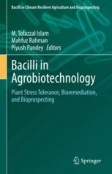Search
Search Results
-
Comparison of enzymatic activities of lipases from Burkholderia plantarii and Burkholderia cepacia
Lipases (EC 3.1.1.3) are enzymes used in the oils and fats industries to modify the physicochemical properties of triacylglycerol (TAG)....

-
Methyl Esters Production from Degummed Soybean Oil Catalyzed by Niobium Phosphate
The present study aimed a significant investigation of interesterification reaction to produce fatty acid methyl esters (FAME) from degummed soybean...

-
Biodiesel Production Via Interesterification of Palm Oil and Ethyl Acetate Using Ion-Exchange Resin in a Packed-Bed Reactor
Interesterification reaction of palm oil and ethyl acetate for the synthesis of biodiesel was performed in a small-scale fixed-bed reactor. The...

-
Spray Chilling/Cooling of Nutraceutical Ingredients
Spray chilling is an emerging encapsulation technology useful to produce particles of sizes ranging from a few microns to several millimeters to...
-
Recent Progress on Fungal Enzymes
The world faces many challenges to keep pace with progress in this era. Enzymes are the mainstay in various application fields conducive to this...
-
Chemistry of Food Fats, Oils, and Other Lipids
Fats are important for humans, animals, and plants because of their high energy content, which accounts for large amount of energy storage in the...
-
Recent insight into the advances and prospects of microbial lipases and their potential applications in industry
Enzymes play a crucial role in various industrial sectors. These biocatalysts not only ensure sustainability and safety but also enhance process...

-
Microalgae Biomass Biorefinery: A Sustainable Renewable Energy Feedstock of the Future
Energy plays a crucial role in development and industrialization and is fulfilled by using non-renewable fossil fuels. The drawbacks of fossil fuels...
-
Current Trends in Extraction, Purification, and Refining of Oils from Various Biological Sources Using a Biochemical Method
Extraction of oils is vast and well-built sector which is based on the organic solvent extraction. Various solvents such as hexane, toluene, DCM...
-
Biodegradation of Soap Stock: As an Alternative Renewable Energy Resource and Reduce Environmental Pollution
Cotton (Gossypium hirsutum L.) is an essential natural fiberNatural fibers crop cultivated for the production of cotton, cooking oil, and...
-
Functional Foods and Health
There has been a mounting interest develo** among scientists as well as general consumers in the utilization of functional components naturally...
-
Fat and Oil Products
Fat is a principle component of the diet. It is enjoyed in the diet due to characteristics such as its flavor/mouthfeel, palatability, texture, and...
-
Chemical Composition of Foods
The chemical composition of any food product is important since it determines the reactants available for the chemical transformation that ultimately...
-
Recombinant Strains Producing Thermomyces lanuginosus Thermostable Lipase and their Use in Heterogeneous Biocatalysis, Including Processes of Low-Temperature Synthesis of Esters
This work was devoted to the construction of recombinant strains Escherichia coli BL21 (DE3) and Pichia pastoris X33, which produce a 1,3-specific...

-
Microbial Enzymes and Their Importance in the Environmental Decontamination
Bioremediation is a biological process of recycling wastes into usable form by other organisms. Environmental pollution is a major problem in the...
-
Recent advances in the enzymatic synthesis of lipophilic antioxidant and antimicrobial compounds
Due to the increase in the consumption of highly processed food in developed countries, as well as, a growing number of foodborne diseases,...

-
Production of Lipase by Actinobacteria
Lipases are enzymes that act on lipids and have the ability to catalyze the hydrolysis of triacylglycerol in glycerol and free fatty acids at the...
-
Bacillus Species of Ruminant Origin as a Major Potential Sources of Diverse Lipolytic Enzymes for Industrial and Therapeutic Applications
Lipases are biocatalysts that catalyze a wide range of reactions such as the hydrolysis of triglycerides or lipids and esterification of fatty acids...
-
Enzyme in Milk and Milk Products: Role and Application
Enzymes are biocatalysts that catalyse a desired chemical reaction. Enzymes are specific in their action and yield into products. The enzymes that...
-
The Science of Microbial Enzymes as Detoxification Tool for Inorganic and Organic Pollutants
A variety of enzymes from bacteria, plants, and fungi have been discovered, which help in the degeneration of toxic organic contaminants. In the...
